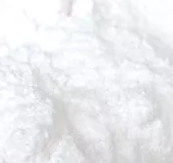Check the ingredients!
... live healthy!


| "Descrizione" by Ark90 (12417 pt) | 2024-Oct-04 16:33 |
| Evaluation | N. Experts | Evaluation | N. Experts |
|---|---|---|---|
| 1 | 6 | ||
| 2 | 7 | ||
| 3 | 8 | ||
| 4 | 9 | ||
| 5 | 10 |
Sodium lauroyl glutamate is a mild anionic surfactant derived from natural sources such as coconut oil and glutamic acid, an amino acid. It is commonly used in skincare, haircare, and personal hygiene products for its excellent cleansing, foaming, and emulsifying properties. Sodium lauroyl glutamate is known for being gentle on the skin, making it suitable for sensitive skin and baby care products. It is biodegradable and considered eco-friendly due to its natural origin and gentle profile.
Chemical Composition and Structure
Sodium lauroyl glutamate is the sodium salt of lauroyl glutamic acid, which is formed by combining lauric acid (a fatty acid) with glutamic acid. The structure consists of a hydrophobic lauric acid chain and a hydrophilic glutamate group, making it an effective surfactant that can reduce surface tension and help oil and water mix in formulations.
Physical Properties
Sodium lauroyl glutamate typically appears as a white or off-white powder or granules. It is highly soluble in water and creates a rich, creamy foam when used in cleansers or shampoos. Due to its mild nature, it is non-irritating to the skin and eyes, making it ideal for products formulated for sensitive or delicate skin. It is also stable across a wide pH range, making it versatile for various cosmetic formulations.

Production Process
The production of sodium lauroyl glutamate involves the following steps:
Raw Material Extraction: Lauric acid is extracted from coconut oil or palm kernel oil, and glutamic acid is obtained from natural fermentation processes.
Reaction: Lauric acid is combined with glutamic acid, followed by neutralization with sodium hydroxide to form sodium lauroyl glutamate.
Purification: The final product is purified and dried, resulting in a high-quality surfactant ready for use in cosmetic formulations.
Formulation: Sodium lauroyl glutamate is incorporated into personal care products for its gentle cleansing and foaming properties.
Applications
Cleansers: Sodium lauroyl glutamate is widely used in facial cleansers, body washes, and hand soaps due to its ability to cleanse the skin without stripping natural oils. It is especially suitable for sensitive and dry skin types.
Shampoos and Hair Care: In shampoos, it provides gentle cleansing while maintaining scalp health, leaving the hair soft and manageable. It is commonly found in sulfate-free shampoos.
Baby Care Products: Because of its mildness, sodium lauroyl glutamate is often included in baby shampoos, bath products, and wipes, ensuring safe and gentle cleansing for delicate skin.
Makeup Removers: In makeup removers and micellar waters, sodium lauroyl glutamate helps to dissolve and remove makeup and impurities without causing irritation.
INCI Functions:
Antistatic agent. Static electricity build-up has a direct influence on products and causes electrostatic adsorption. The antistatic ingredient reduces static build-up and surface resistivity on the surface of the skin and hair.
Hair conditioning agent. A large number of ingredients with specific purposes can co-exist in a hair shampoo: cleansers, conditioners, thickeners, mattifying agents, sequestering agents, fragrances, preservatives, special additives. However, the indispensable ingredients are the cleansers and conditioners as they are necessary and sufficient for hair cleansing and manageability. The others act as commercial and non-essential auxiliaries such as: appearance, fragrance, colouring, etc. Hair conditioning agents have the task of increasing shine, manageability and volume, and reducing static electricity, especially after treatments such as colouring, ironing, waving, drying and brushing. They are, in practice, dispersing agents that may contain cationic surfactants, thickeners, emollients, polymers. The typology of hair conditioners includes: intensive conditioners, instant conditioners, thickening conditioners, drying conditioners.
Surfactant - Cleansing agent. Cosmetic products used to cleanse the skin utilise the surface-active action that produces a lowering of the surface tension of the stratum corneum, facilitating the removal of dirt and impurities.
Environmental and Safety Considerations
Sodium lauroyl glutamate is considered safe for use in personal care products. It is non-irritating, non-sensitizing, and suitable for all skin types, including sensitive skin. Additionally, it is biodegradable, making it an environmentally friendly option compared to harsher synthetic surfactants. The natural origin of its raw materials also contributes to its eco-friendly profile. It is often included in formulations that emphasize sustainability and gentle care.
It is an antistatic surfactant of vegetable origin used as an adjuvant to other surfactants to increase its tolerability on delicate skin
Sodium lauroyl glutamate has proved to be a relatively low-aggressive surfactant on the skin (1).
| Appearance | White powder |
| Boiling Point | 543.6ºC at 760 mmHg |
| Flash Point | 282.6ºC |
| PSA | 106.53000 |
| LogP | 2.39770 |
| Chemical Safety |  |
 |  |
 |  |
Synonyms:
References________________________________________________________________________
(1) Corazza M, Lauriola MM, Bianchi A, Zappaterra M, Virgili A. Irritant and sensitizing potential of eight surfactants commonly used in skin cleansers: an evaluation of 105 patients. Dermatitis. 2010 Sep-Oct;21(5):262-8.
Abstract. Background: Irritation from surfactants contained in detergents is a frequent adverse reaction to cosmetics. Sensitization to surfactants is also possible. In the literature, comparative studies about irritant and sensitizing potential of different surfactants are heterogeneous and inconclusive about the best molecules to use. Objectives: We compared the irritant and sensitizing potential of some surfactants that are usual components in marketed synthetic detergents (syndets) to obtain practical information regarding commonly used detergents.....Conclusion: From this study, we deduce that cosmetic companies' efforts to search for and market new products with very mild surfactants have been generally successful.
| Evaluate |